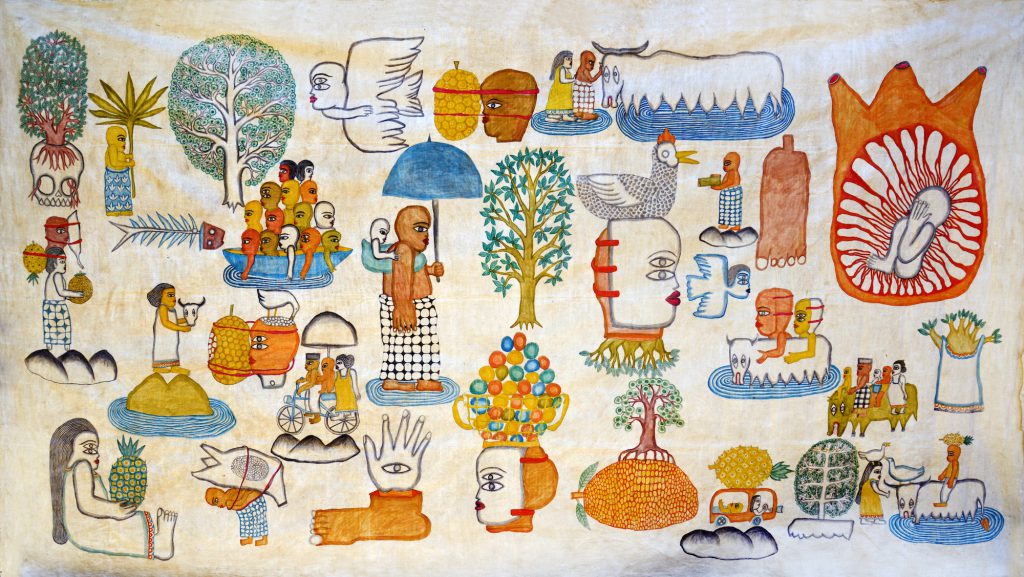
Jumaadi, Love Will Find It's Way, 2019, pigment on cloth, 150 x 285 cm
Jumaadi, Love Will Find It's Way, 2019, pigment on cloth, 150 x 285 cm

Splitting his time between his birthplace in East Java, which serves as a creative meeting place for artists, writers, and craftspeople; Kamasan, the traditional art center of Bali; and Imogiri, in Yogyakarta, where his studio is located, Jumaadi creates “art as a vehicle to connect with other like-minded people outside of the academic sphere, outside of reports, even outside of ‘official’ artworks—in a way that uses metaphors, shapes, lyrics, notes.” His works are inspired by the ancient practice of finding relief in the communal bond and joint rituals of storytelling, listening, and fabulation. It is in this manner that Jumaadi connects us with various guises of reality that are informed by the tales told during his childhood, the Hindu epics Ramayana and Mahbharata, fables from Ovid’s Metamorphoses, lessons from the Old Testament, and contemporary Indonesian literature and poetry.
Through his ongoing engagement with different communities, Jumaadi has mastered techniques from painting on metal and buffalo hide to conceptualizing shadow theater performances accompanied by complex musical arrangements. His cotton cloth paintings follow the craft and iconographic tradition of Balinese narrative temple paintings in which two-dimensional characters and landscapes are arranged in flat compositions that recall puppets in a shadow play or the reliefs of Javanese Hindu-Buddhist kingdoms. Jumaadi spent a decade experimenting with cloth, crafting a process in which the material is starched with rice paste, painted, stretched, dried in the sun, and finished with a cowrie shell glaze. The cloths are vessels for hopeful narratives, the prospect of love, belonging, and interdependencies among animal, mineral, and vegetal beings.
Composed of seven chinagraph drawings on mulberry paper, Painkillers (2016) responds to a sinister chapter of forced migration and exploitative labor under the weight of colonization. Inspired by Javanese laborers’ painful addiction to anti-sleeping pills, the piece represents the artist’s tragicomic response to neoliberal alertness for profit maximization.
Jumaadi, Love Will Find It's Way, 2019, pigment on cloth, 150 x 285 cm